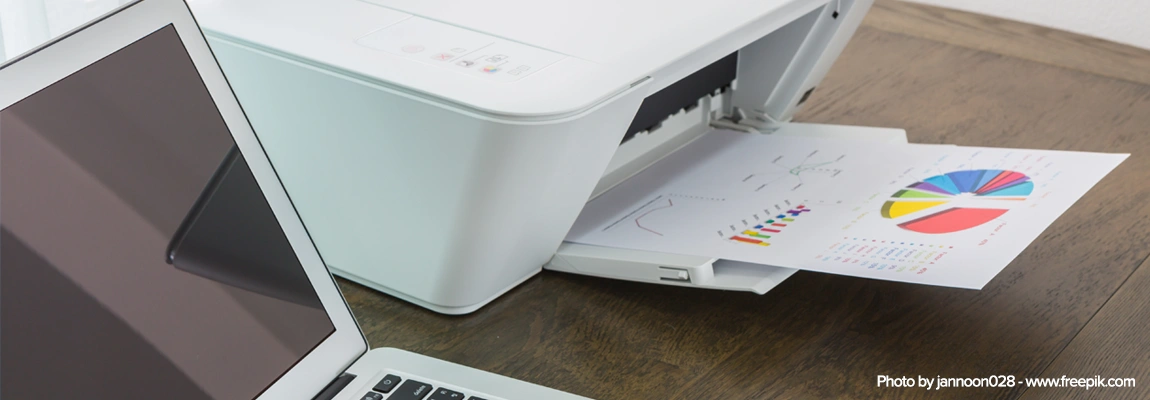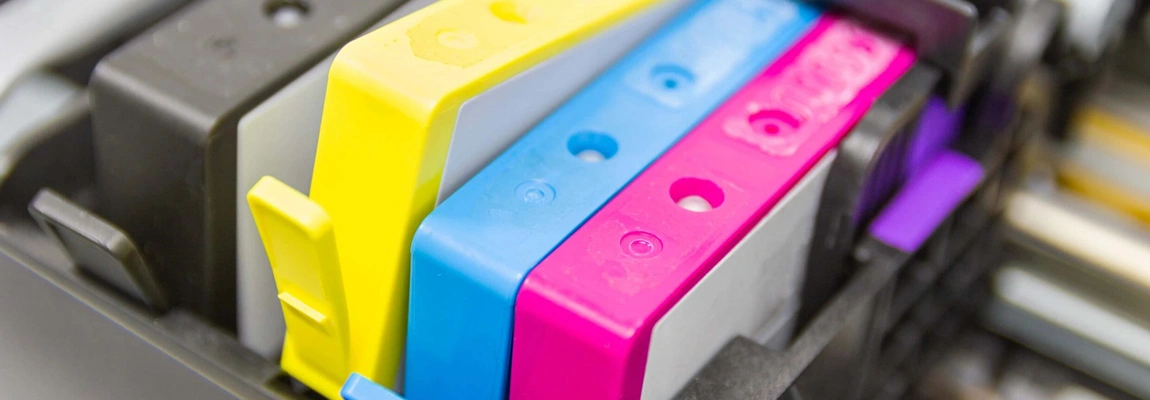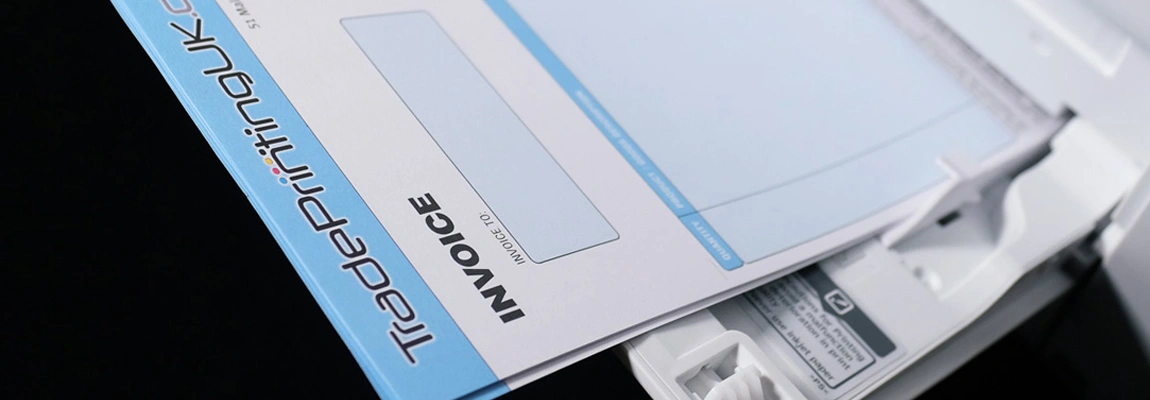9 Ways to Save Money on Printing in the Workplace
9 Ways to Save Money on Printing in the Workplace

Printing in the office may be a necessary process, but it’s still one that you may sometimes think twice about doing. The reason for that, of course, is that printer ink and colour laser toner costs a small fortune to refill constantly.
While you may feel tempted to use a low-quality printer with third-party ink cartridges, that may actually end up costing your company more money in the long term. Well, we’re here to help change that by providing 7 ways to save money on printing in the workplace.
1. Use Draft Mode or Eco Mode to Save Ink
Most inkjet and laser printers have a draft mode or eco mode in their software settings. This mode helps reduce the amount of ink used by about 5 to 10% in each print. So, if you’re printing tens to hundreds of pages a day, you’ll make quite a difference in the ink consumption. In addition to that, printers typically print faster with this mode. So, you could save time printing several pages for an in-house project with it too.
It’s important to note that this mode is only suitable for printing text. Printing images with the draft mode enabled will compromise the quality of the picture and most likely either make it more low-resolution or less saturated. It’s best not to use this mode for professional presentations or important documents. The images may be pixelated, or the text may be grainy, which may not make a good impression on another concerned party.
2. Double-sided Printing
The majority of modern laser printers (except the bargain-basement models) have the option of double-sided printing. Not only will this save you half of your paper bill, it’s quicker for the laser to output on a single sheet than separate onto two sheets.
3. Proofread Your Work Before Printing
A simple yet effective way to save money on printing is to actually proofread your work before printing it. Go through your entire text and numbers and double-check them after completing the first draft. If possible, have another colleague check through a major project as well. It could also help to use some proofreading tools such as Grammarly to help you catch some grammatical errors that you may overlook.
Being diligent about your work can help minimise the back and forth of editing your work after hitting “print.” You’ll save both paper and ink by not reprinting the same pages only because of minuscule errors. Also, it helps to be extra careful with images. Printers use a lot more ink to print pictures than they do for text. So, you’ll waste a lot of ink if you have to reprint a picture. It’s best to go over vital fixes such as red-eye removal and cropping. Using the correct type of paper for your printer, whether for ink-jet or laser is important too. Don’t scrimp with cheap, or flimsily-thin paper.
4. Have Paperless Meetings
For in-house meetings, it can help save a lot of money to have paperless ones. Consider keeping the minutes, agenda, and other relevant documents digital. You could instead store them on your company’s server, local hard drives or USB sticks (make sure to back-up and at least duplicate where you store them too) or send them to your respective colleagues or employees via e-mail. For presentations, keep a monitor present in the conference room so that the need for printed handouts is unnecessary. You’ll help save money, and paperless meetings are better for the environment too.

5. Use Fonts That Use Minimal Space on the Page
Some fonts may use more paper simply because they take up more space on the page, either because they have wider characters, or more space between the actual letters, known as kerning values.
Now, paper may not be as expensive as printer ink, but more paper usage will result in increased costs. So, one of the easiest ways to save money on printing in the workplace is to use Condensed fonts like Times New Roman, Ecofont, Century Gothic, and other print-friendly fonts. These fonts also actually help reduce ink usage by leaving minute spaces in the form of empty lines or dots. So, the printer will have less text to print. You could look for various ecofonts online (e.g. from Google Fonts) or simply use software that transforms all fonts into an ecofont.
6. Ignore Low Ink Warnings in your Cartridges
While it’s certainly helpful to have your printer inform you when your ink cartridge is running low, it often does so when there’s still quite a bit of ink left. More often than not, printers start to show this warning when there’s about 30% of ink still present in the cartridge. So, replacing your cartridge at this point is a significant waste of resources.
You could use these warnings as a reminder to buy new cartridges. However, you should only install a new cartridge after the results of the printout are poor. Many inkjet cartridges have translucent or transparent cases. So, you can look at them to gauge how much of it is left.
It’s usually in your best interest to replace ink cartridges with the printer manufacturer’s recommended OEM product. But, in most cases, the manufacturer wants you to buy their consumable products (which is how they actually make their money), which is they warn you against using third-party printers. That’s the real reason than lasers and inkjets are now relatively cheap to buy in the first place as they’re a loss leader for the manufacturer and it’s the consumables that deliver their profit. However, third-party ink cartridges may not offer the same level of quality as the printer’s results.
In addition to that, it may also not be fully compatible with the printer, which, in turn, may damage the print heads, or other parts in the long term. In that case, you won’t really save money on printing at all because you’ll have to have your printer repaired professionally.
7. Purchase a Highly Efficient Printer
If there’s anything to take away from the points above is that you have to consider the long-term costs of using a printer in your workplace. So, it can help you actually save money on printer ink costs by investing in a highly efficient printer. These may be a bit more expensive, but they’ll use a lot less ink for every printout than cheap, bargain basement models. Usually anything under £100 is considered “cheap”. You can determine which printers are efficient by viewing the page-yield ratings for every model. This rating provides an estimate of how many pages the printer will print with one cartridge. Check the specifications for the printer to find this rating.
Having said that, it can be beneficial to buy a cheap printer if the office doesn’t print frequently. In that case, investing in a high-end, efficient printer won’t help save much money. You also don’t need to buy a printer with many different features. For example, if you need to print some custom envelopes only a few times a year, it could help to hire a service provider to do it for you instead of buying an expensive printer with features you won’t use much.
8. Buy Printer Ink and Paper in Bulk
It may be tempting to restock printer ink and paper only when the supplies run out. However, buying ink cartridges and paper separately every week or month can be expensive. Instead, consider buying in bulk because you can then get these supplies at wholesale price. So, the price per unit will be lower than it would if you bought each supply individually.
So, one of the best ways to save money in the workplace is to perform an audit of how much printing is done at your office and how many supplies are needed. Using that research, you can determine how often your office should be restocked with new printing supplies. These can be scheduled pickups to help streamline the whole process too.
9. Recycle your Cartridges
Many manufacturers, especially Laser manufacturers e.g. Ricoh, build in part of their consumables’ cost as a cost of sale due to recycling. Once you’ve the cartridge empty, there is normally a link in the box to take you to the original manufacturer’s website and requested that they get a courier to pick-up the old cartridge or toner from you, at no cost to you. This saves you a trip to a recycling centre with messy cartridges.

Last Few Words
It’s clear that small changes in printing habits can save your company a lot in the long term. Other than the 8 points mentioned above, you may also be able to save money by buying a grayscale printer instead of a coloured one. If you don’t need colour, there’s no reason to buy such a printer because they’re usually more expensive.
